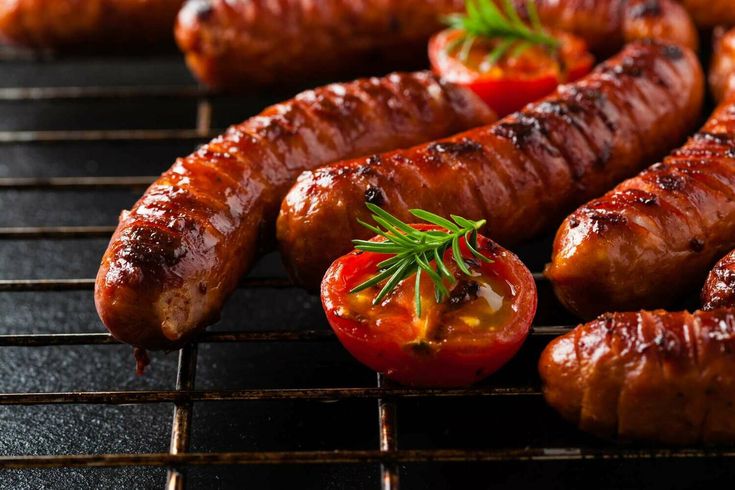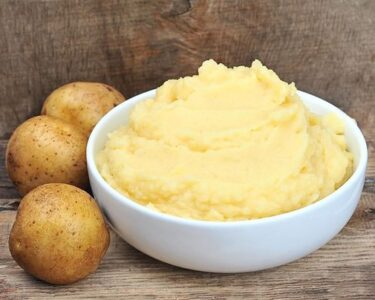What is Sausage Made Of
Sausage is a versatile meat product that can be made from many things, but the main ingredients typically include:
- Ground meat: This is usually pork, beef, or poultry, but it can also be made from lamb, game, or even fish.
- Fat: This is an important ingredient for both flavor and texture. Pork fat is a common choice, but other options include beef tallow or even chopped-up chicken skin.
- Seasonings: Salt is a must-have, and then a wide variety of spices and herbs can be used to create different flavor profiles. Common additions include black pepper, fennel seed, sage, thyme, and nutmeg.
- Binders: These help hold everything together. Bread crumbs, flour, or even potato starch are all possibilities.
Here’s a more detailed breakdown:
- Meat: Traditionally, sausages are made from pork, but any animal can be used. Butchers often use trimmings (leftover bits from other cuts) to make sausage, which helps reduce waste. Read about How Long to Steep Tea
- Fat: Fat adds flavor and moisture to sausage. The ideal ratio of lean meat to fat depends on the type of sausage.
- Seasonings: This is where sausage gets its unique flavors. The possibilities are endless, but common seasonings include salt, pepper, fennel, sage, thyme, and nutmeg.
- Binders: These help hold the sausage together and prevent it from crumbling. Bread crumbs, flour, and potato starch are all binders that can be used.
History of Sausage
The history of sausage dates back to ancient times. Sausages are believed to have originated in Mesopotamia, around 3100 BC. From there, they spread to ancient Greece and Rome, where they became a popular food item. Over the centuries, sausage-making techniques evolved, and different regions developed their unique varieties. Today, there are countless types of sausages, each with its distinct flavor profile and preparation method.
Basic Ingredients of Sausage
At its core, sausage consists of four main components: meat, fat, seasonings, and casings. These elements work together to create the flavorful and satisfying product we know and love. Don’t Miss to Check Out Our Website: THEGENERAL FEED

Types of Meat Used in Sausage
The primary ingredient in sausage is meat. Pork is the most common choice, thanks to its rich flavor and fat content. However, beef, chicken, and even exotic meats like venison and elk are also used. The type of meat used can significantly impact the flavor and texture of the sausage.
Role of Fat in Sausage
Fat is a crucial component of sausage. It adds moisture, flavor, and a tender texture. Typically, pork fat is used, but beef fat or other animal fats can also be included. The ideal fat content in sausage is around 20-30%, ensuring a juicy and flavorful product.
Seasonings and Spices
Seasonings and spices give sausage its distinctive taste. Common spices include salt, pepper, garlic, and paprika. However, the spice mix can vary widely depending on the type of sausage and its regional origin. For example, Italian sausage often includes fennel seeds, while chorizo is flavored with smoked paprika and chili powder.
Casings: Natural vs. Synthetic
Casings hold the sausage mixture together and come in two main types: natural and synthetic. Natural casings are made from the intestines of animals, usually pigs or sheep. They are prized for their tender bite and ability to hold up during cooking. Synthetic casings, made from collagen or cellulose, are a more affordable and widely available option. Each type has its pros and cons, with natural casings offering superior texture and synthetic casings providing uniformity and ease of use.
Sausage Making Process
Making sausage is a straightforward yet meticulous process:
- Grinding the Meat: The meat is ground to the desired consistency, often using a coarse grind for a more rustic texture.
- Mixing Ingredients: The ground meat is mixed with fat, seasonings, and any additional ingredients.
- Stuffing the Casings: The mixture is stuffed into casings using a sausage stuffer or a funnel.
- Cooking Methods: Sausages can be cooked in various ways, including grilling, frying, boiling, or smoking.
Popular Types of Sausage
Sausages come in many forms, each with its unique flavor and preparation method. Some popular types include:
- Breakfast Sausage: Mildly seasoned, often served with eggs and pancakes.
- Italian Sausage: Available in sweet or hot varieties, flavored with fennel and garlic.
- Bratwurst: A German sausage made from pork and veal, often grilled.
- Chorizo: A spicy Spanish sausage made with pork and smoked paprika.
Health Considerations
While delicious, sausage can be high in fat and sodium. It’s essential to enjoy sausage in moderation as part of a balanced diet. Look for options with lower fat content and minimal additives for a healthier choice.
Sausage in Different Cuisines
Sausage plays a significant role in many cuisines:
- European Sausages: Include varieties like Polish kielbasa, French andouille, and English bangers.
- Asian Sausages: Often sweet and savory, such as Chinese lap cheong.
- American Sausages: Include hot dogs, breakfast links, and summer sausage.
Vegetarian and Vegan Sausage Alternatives
For those who avoid meat, there are many vegetarian and vegan sausage options. These sausages are made from ingredients like tofu, tempeh, and seitan, often flavored to mimic traditional sausage. Popular brands include Beyond Meat and Impossible Foods, which offer plant-based sausages that closely resemble their meat counterparts.
How to Choose Quality Sausage
When buying sausage, it’s crucial to read labels carefully. Look for sausages with a high meat content and minimal fillers or artificial additives. Check for natural casings and high-quality spices for the best flavor.
Homemade Sausage Recipes
Making sausage at home can be a rewarding experience. Here’s a basic recipe to get you started:
Basic Homemade Sausage Recipe:
- Ingredients: 2 pounds ground pork, 0.5 pounds pork fat, 2 teaspoons salt, 1 teaspoon black pepper, 1 teaspoon garlic powder, 1 teaspoon paprika, natural casings.
- Instructions:
- Soak the casings in warm water.
- Mix the ground pork, fat, and seasonings thoroughly.
- Stuff the mixture into the casings using a sausage stuffer.
- Twist into links and refrigerate overnight before cooking.

Conclusion
Sausage is a versatile and flavorful food enjoyed by many cultures worldwide. From its rich history to the variety of ingredients and methods used in its preparation, sausage offers something for everyone. Whether you prefer traditional pork sausage or a plant-based alternative, understanding what goes into sausage can help you make informed choices and even try your hand at making it yourself.
FAQs
What is the most popular type of sausage?
The most popular type of sausage varies by region, but globally, pork sausages like bratwurst and Italian sausage are very popular.
Can sausages be part of a healthy diet?
Yes, sausages can be part of a healthy diet when consumed in moderation and chosen with care for quality ingredients and lower fat content.
How long can you store sausage?
Fresh sausage can be stored in the refrigerator for 1-2 days or frozen for up to 2-3 months. Cooked sausage can last 3-4 days in the refrigerator.
Are there gluten-free sausage options?
Yes, many sausages are naturally gluten-free, but it’s essential to check the label to ensure there are no gluten-containing fillers or additives.
How can you tell if sausage is cooked properly?
Sausage is properly cooked when it reaches an internal temperature of 160°F (71°C) for pork and beef sausages, or 165°F (74°C) for poultry sausages.

Welcome to TheGeneralFeed.ca, where Lucas brings a fresh perspective to the world of news and information!
Lucas is a dynamic writer who is passionate about delivering compelling content that informs, engages, and inspires our readers. With a keen interest in a wide range of topics, including current events, technology, lifestyle, and more, Lucas keeps our audience informed and entertained with his insightful articles.




